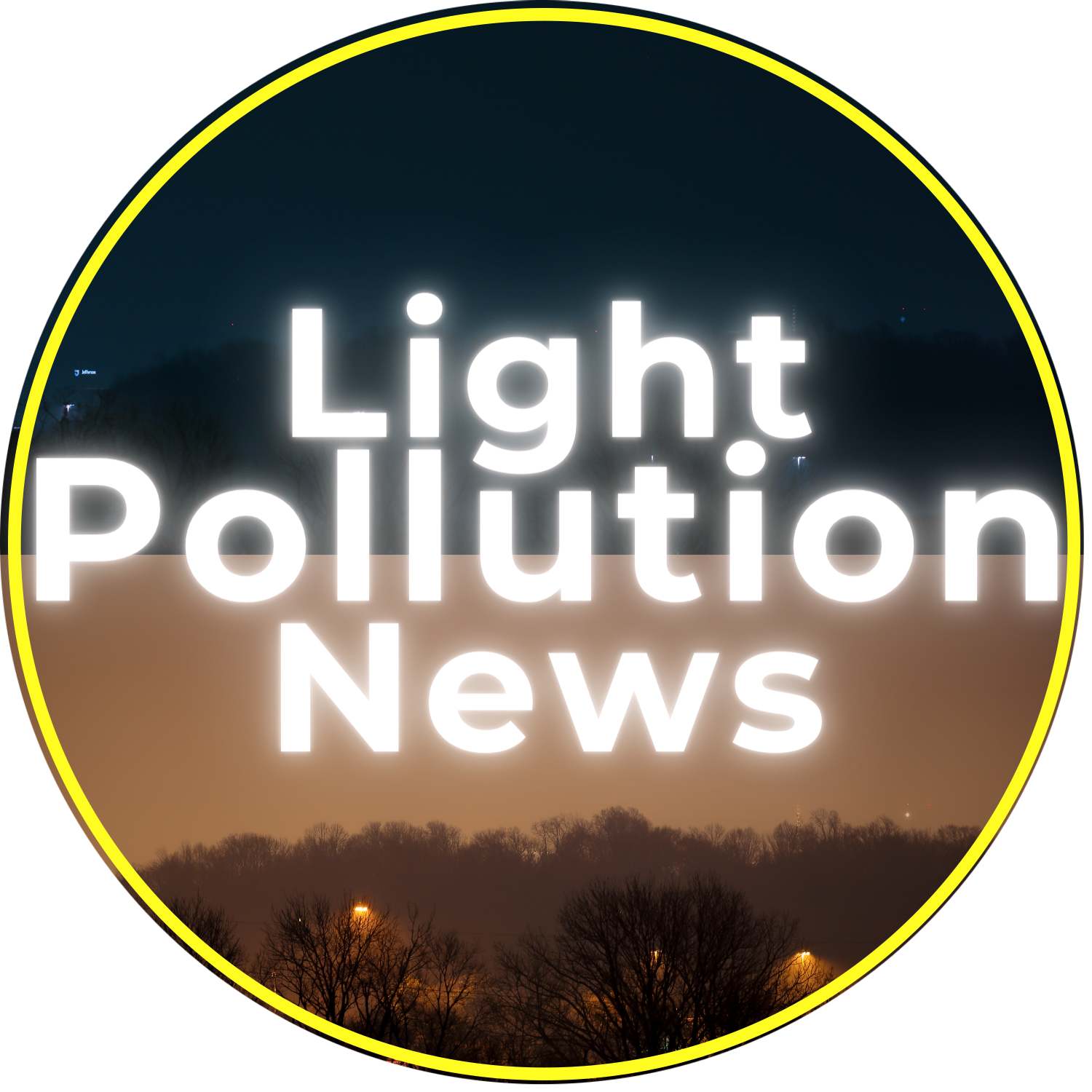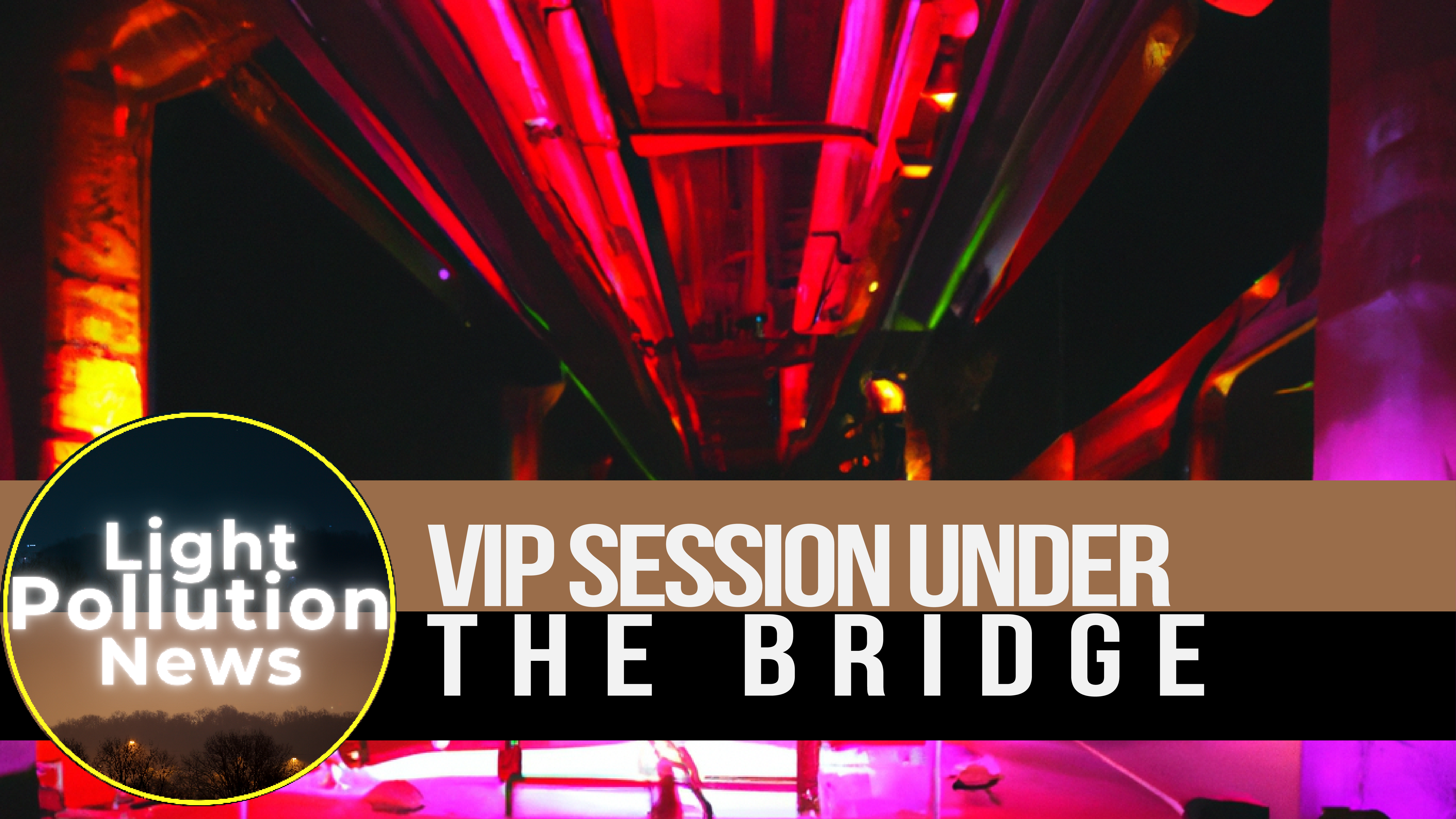
Join the conversation at r/lightpollutionnews or Follow us @Light.Pollution.News or LightPollutionNews. Join our mailing list.

December 2023: VIP Session Under the Bridge!, Light Pollution News.
Host:
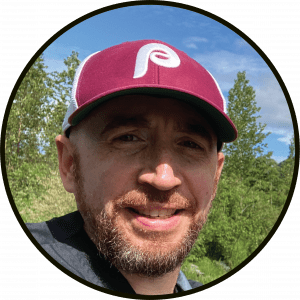
Bill McGeeney
Guests:
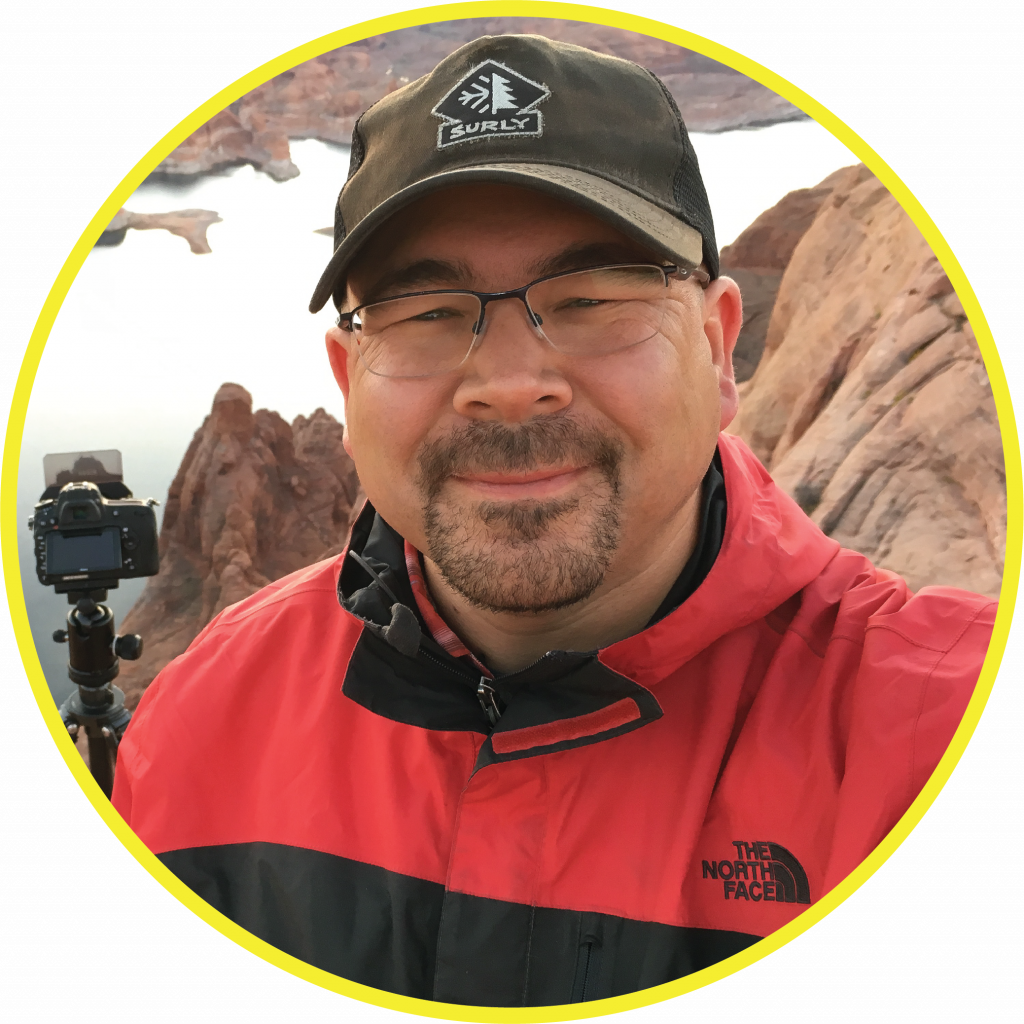
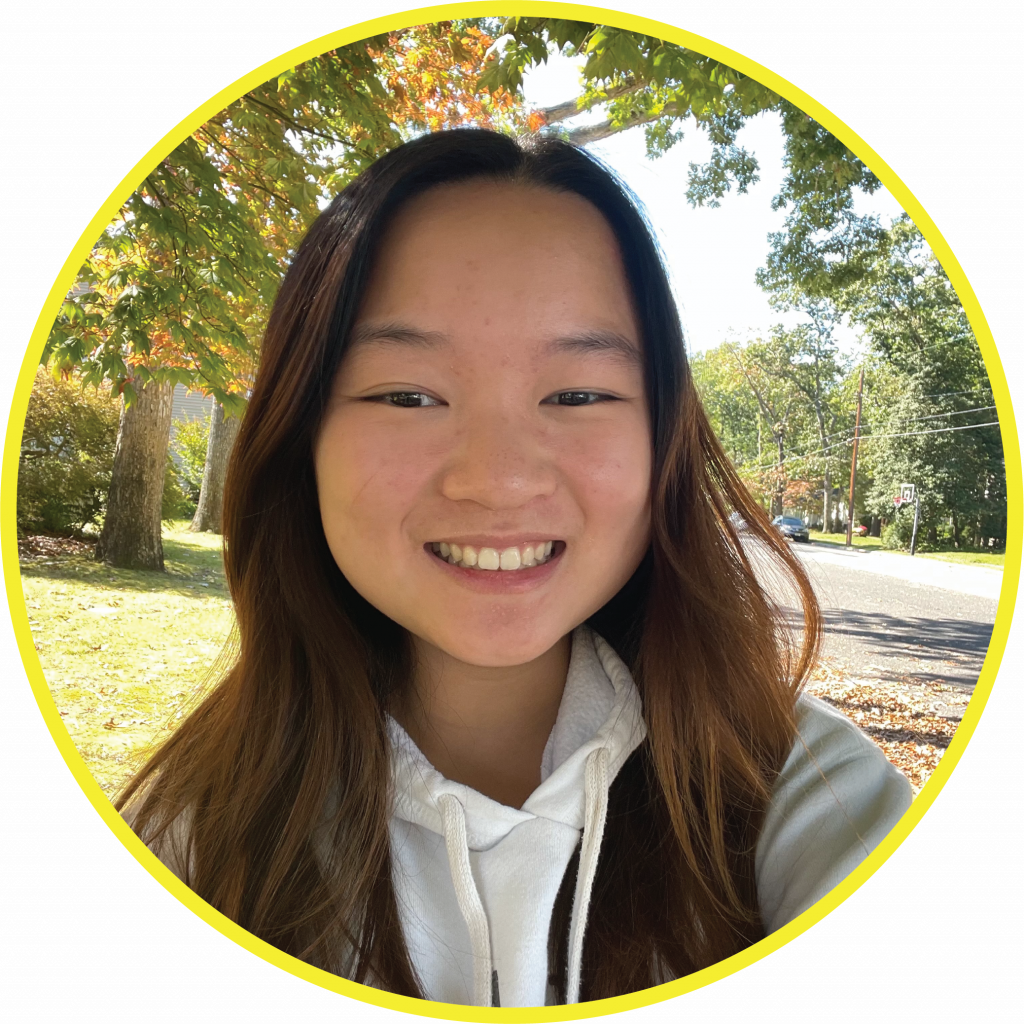
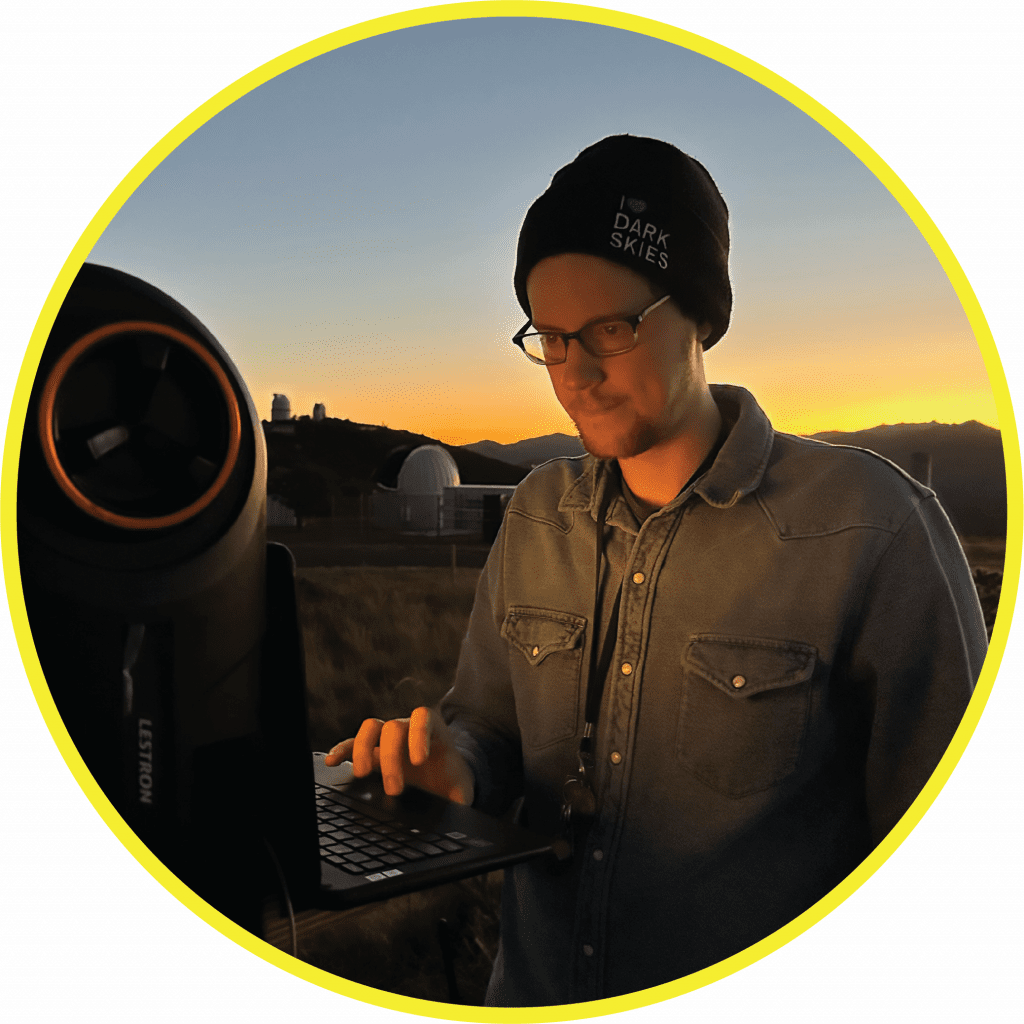
Travis Novitsky
A proud citizen and lifelong resident of the Grand Portage Anishinaabe Nation at the northeastern tip of Minnesota, Travis has photographed the woods and waters of the north shore of Lake Superior for over 25 years. A self taught photographer, Novitsky photographs his native homelands in Minnesota, along with the brilliant deserts of the southwestern United States. Novitsky devotes countless hours to capturing star filled night skies and the Aurora Borealis (northern lights). Novitksy’s recent projects included the documentary Northern Nights, Starry Skies and the release of Spirits Dancing. You can find all of his photography at TravisNovitsky.com.
Bonnie Peng
Bonnie Peng is a youth advocate and recipient of the 2023 Dark Sky Int’l Rising Star Award. Peng, a regular on Light Pollution News, has founded an astronomy club, demonstrated scientific rigor in research projects and has worked to with her community to raise awareness about light pollution.
Stephen Hummel
Stephen Hummel is the Dark Skies Initiative Coordinator for the University of Texas at Austin’s McDonald Observatory, located in the Big Bend region of far western Texas. Hummel works with communities, local governments, energy companies, and other organizations to reduce light pollution and adopt better lighting practices. Hummel is committee chair for the Greater Big Bend International Dark Sky Reserve, the largest area in the world certified by DarkSky International. In his spare time, Hummel is an avid photographer of the night sky and has been featured by National Geographic, BBC, NASA, and more.
Article List:
- F1 bans three key colours from Sphere during Vegas GP action, Adam Cooper, Autosport.
- Artificial light at night: a global disruptor of the night-time environment, Philosophical Transactions of the Royal Society B.
- Does artificial light at night alter moth community composition?, Philosophical Transactions of the Royal Society B.
- Impacts of artificial light at night on the early life history of two ecosystem engineers, Philosophical Transactions of the Royal Society B.
- Artificial light at night decreases plant diversity and performance in experimental grassland communities, Philosophical Transactions of the Royal Society B.
- Artificial light at night (ALAN) causes shifts in soil communities and functions, Philosophical Transactions of the Royal Society B.
- Long-term exposure to experimental light affects the ground-dwelling invertebrate community, independent of light spectra, Philosophical Transactions of the Royal Society B.
- Belfast’s famous Starling murmuration could be back after light pollution reduced, Shauna Corr, BelfastLive.
- The influence of light on elasmobranch behavior and physiology: a review, Frontiers in Marine Science.
- Short-term night lighting disrupts lipid and glucose metabolism in Zebra Finches: Implication for urban stopover birds, Avian Research.
- Comparative transcriptome analysis of eyes reveals the adaptive mechanism of mantis shrimp (oratosquilla oratoria) induced by a dark environment, Genetica.
- Effects of light pollution on Bluegill foraging behavior, Transactions of the American Fisheries Society.
- Nighttime drone shows gaining more popularity, WVLT News.
- Spectacular Drone Show Lights Up The Sky Over New York’s Central Park, Kavi Dolasia, DogoNews.
- Spectacular drone show held in Central Park, PIX11 News.
- ‘Drones are the next thing’ for Disney nighttime spectaculars, Brady MacDonald, The Mercury News.
- An Explosion of Light Pollution on the Wabash River, Chrisopher Graney, Vatican Observatory.
- The dark sky blues: Light pollution is robbing us of the stars, Dennis Kovtun, CBC News.
- Light Pollution: The Global Scourge We Like to Ignore, Josh Sims, InsideHook.
- Eyes have a natural version of night vision, Science Daily.
- The effect of reduced street lighting on road casualties and crime in England and Wales: controlled interrupted time series analysis, J Epidemiol Community Health.
- The Chicago Alley Lighting Project: Final Evaluation Report, Illinois Criminal Justice Authority.
- Our dark skies are rapidly disappearing. RVers can help, Gail Marsh, RV Travel.
- 6 Things You Need to Know About Outdoor Lighting, According to a Landscape Designer, Blake Bakkila, Sunset.
- “Candlelit Hotel”, The Patch.
- Lights out: Stankowski Field to go dark once monthly for light pollution, Mary McCue Bell, Columbia Missourian.
- 5 Things You Can Do to Reduce Light Pollution, Madeleine Burry, AAA.
- SIU student’s campaign illuminates light pollution and its impact on wildlife, Carly Gist, Daily Egyptian.
- DARK SKIES: Students invited to count stars to pinpoint areas of light pollution in southwestern N.S., Tina Comeau, Saltwire.
- NovaScotiaStarLight.com
- Help Loeka fight light pollution!, Research in Germany.
- NightLights Citizen Science Campaign.
- Day and night light exposure are associated with psychiatric disorders: an objective light study in >85,000 people, Nature Mental Health.
- ‘Confused and unwell’: Light exposure’s impact on mental health, Morgan Liotta, Royal Australian College of General Practitioners.
- Light and dark: underappreciated exposures with big effects on health, Rick Woychik, National Institute for Health.
- Use of Light Protection Equipment at Night Reduces Time Until Discharge From the Neonatal Intensive Care Unit: A Randomized Interventional Study, Journal of Biological Rhythms.
- Woman sued West Coast city after walking into street light pole, Amir Ali, Daily Hive Canada.
- Museum of Street Lighting offers an illuminating look at LA history, James Bartlett, Los Angeles Daily News.
- ‘There’s no street lights’: Residents react after Marion County deputy hits and kills cyclist, WCJB.
- Louisville’s broken streetlights bring thousands of complaints, a $6 million plan for the future, Amanda Roberts, WDRB.
- 2022.Louisville-Jefferson County Urban Services Lighting Study
- Houghton Will Take More Time to Consider Street Light Installations, Keweenaw Report.
- A dark war is brewing between stargazers and soccer players in this coastal RI town. Here’s why., Jack Perry, The Providence Journal.
- Celebration of Space – September 15, 2023, Scott MacNeill, Frosty Dew Observatory & Sky Theatre.
- Parque Ecológico Joya-La Barreta: Mexico’s first Urban Night Sky Place, Drew Reagan, Dark Sky International.
- Vercors named fifth International Dark Sky Reserve in France, Amber Harrison, Dark Sky International.
- A simple streetlight hack could protect astronomy from urban light pollution, Tereza Pultarova, Space.com.
- Low-cost air, noise, and light pollution measuring station with wireless communication and tinyML, Hardware X.
- Stargazing trails nationally recognized for collaboration between Montana industries, Explore Big Sky.
- A night under the stars: Best hikes in the region for stargazing, Sean O’Dwyer, Times Union.
- Livin’ the Dream: Stars in a dark night sky, Mountain Times.
- All Sky Light Pollution Ratio (ALR) Map.
So we have a lot to discuss tonight! Not the least of which, haha, I’m not sure if any of you guys heard about this, the Sphere in Las Vegas was banned from displaying three colors out of fear of distracting the F1 drivers at the Las Vegas Grand Prix!
This had me cracking up, the fact that you have to make this statement might be telling of its effects on normal drivers!
Per Autosport, “The Las Vegas Sphere will be operational during track action over the course of the F1 event – but every effort will be made not to distract the drivers.”
The sphere will not be displaying red, yellow or blue out of fear of driver confusion, as apparently trackside signs utilize those colors.
The outright biggest news this month comes from a new publication of the Philosophical Transactions of the Royal Society B for whom featured one whole issue dedicated to light pollution’s impact on ecology. This is the second light pollution themed science journal of 2023. If you’ll recall Science Magazine had a Light Pollution focus back in July.
Light pollution, according to Bara and Falchi, the writers of the review paper Artificial Light at Night: a global disruptor of the night-time environment blame a mischaracterization of the initial phrasing of “pollutant” to convey the concept that light was more of an irritant than a pollutant.
For example, they cite the phrases ‘useful light versus polluting light’ or the ‘inappropriate or excessive use of artificial light.’ These are two phrases that I, myself, have been guilty of saying.
The authors contest that these phrases undermine the fact that by definition the physical embodiment of the light itself being artificially generated and exerted onto things is a pollutant.
According to the article, light is an environmental pollutant as it:
- Is a form of energy
- Produced by human activity
- Alters the natural concentrations already apparent in the environment
And causes (as we see) harm to human health, the environment and the ecology.
We have a tremendous amount of research that came through this month implicating artificial light at night in ecological impacts.
- ALAN (artificial light at night) has been shown to impact soil consistency affecting respiration and carbon-use efficiencies.
- Artificial light at night affects invertebrate activity, spiking predation rates where sky glow was apparent.
- There was a study on the composition of moth communities. In this study, it was found that sky glow “decreased moth abundance and species richness.”
- Artificial light plays a role in reducing survival for mussels and barnacle larva.
- In another study, artificial light at night has been proven to reduce plant biomass by 33% and a similar drop in the proportional diversity of the plant populations of the study which included grasses, herbs, and legumes.
Ecologists in Belfast are working hard to bring back their famous starling murmuration.
For you at home who may not be aware of what a murmuration visually looks like, it’s a fantastic show put on by a dense flock of starlings flying to generate warmth and share information.
Starlings could be seen as recent as 2018, but new LED lights installed on the Albert bridge appear to be the culprit.
In recent years, new LED upgrades included significant brightening of the bridge from all sides and even underneath. Starling counts have since dropped to a trickle.
To help bring the birds back, lights underneath and on the side of the bridge were removed. Other lighting was either dimmed or changed to red.
While it’s too soon to tell, Belfast residents are hopeful that the starlings will return.
An interesting article discusses ALAN’s potential impact on sharks, rays, and sawfish.
Anyone who’s walked a fishing pier at night knows about a correlation between light and sea life. Where we go in Florida, night fisherman dip very bright lights aimed toward the water.
Evidently, and I did not know this, the term for such activity is called “light pooling.” It’s even used for ecological tourism.
The authors of the recent review article in Frontiers in Marine Science, compiled a collection of the current literature affecting these types of fish and surmised to the impacts of ALAN, with the explicit request to regulate the time of activities like light pooling, or at the very least, create a permitting system to mitigate the effects of light pooling on sea life.
The researchers are concerned with physiological/hormonal and behavioral impacts of persistent light at night as it specifically relates to these types of fish.
Staying underwater for a second, a study from Transactions of the American Fisheries Society found that intermittent lighting, including headlights – say off of a roadway or highway, actually reduced the ability of fish to accurately strike at and capture prey. Interestingly, steady, always on light did not affect the Bluegill, which was the focus of the research.
Birds! Not an episode goes by without talking about birds! In a study from Avian Research, artificial light at night has been found to increase metabolism. Specifically, birds residing in a light polluted area burn through an increased amount of lipid energy than they otherwise would.
Lipids are the primary energy source fueling bird muscles over the course of migratory flight.
Another article, this time from Genetica, looked at Manits Shrimps. It analyzed the day / night metabolic difference, confirming the importance of a dark environment for shrimp to conserve energy and reduce metabolism. This keeps the trend of a consistent and vocal chorus of research identifying ecological impacts from human related nighttime lighting.
The second piece of big news item came in the form of nighttime entertainment.
This should come as no surprise, as the skies grow darker across North America, drone shows begin to take center stage.
In Central Park, a new drone show seeks to have viewers reflect on what it means to be free by mimicking the very starling murmuration’s we spoke about previously over the course of multiple six minute shows. A public art trend New York is eager to build upon.
Down in Tennessee, at Dollywood, that is Dolly Parton’s amusement park, carefully choreographed drone shows strike a stunning storytelling visual to close out the night.
And never to be outdone, Disney has reportedly filed patents to create custom “drone controlled puppets and 3d drone displays.”
Drone shows cost a fraction of the price of Disney’s nightly firework show. Added to that, as anyone with a dog will attest, they impart much less traumatic noise stress on local ecologies.
Here’s an interesting one for you. Probably one a bit more pertinent for you, Stephen.
Who here likes a mystery?
Christopher Graney, writing for Sacred Space Astronomy at the Vatican Observatory, became curious one cloudy night. He began to dig through the VIIRS maps on LightPollutionMap.info of the area within a day’s drive of his house.
For those of you at home that are not aware of VIIRS stands for Visible infrared Imaging Radiometer Suite. VIIRS is an instrument package placed on multiple satellite missions. If you stroll on over to lightpollutionmap.info, you can scroll through VIIRS overlays dating back to 2012, which is precisely what Graney did.
Graney noticed over the course of a ten year span, a small part the Wabash River area along the Indiana-Illinois border grew to a brightness of a “small city.” Naturally, Graney became curious, so he made the drive.
Expecting to see some new development, no new buildings were to be found. At night, there was “hardly a light dome to be seen.” So what was it?
Well, the answer is oil wells! Dirt pits containing natural gas flares radiated infrared heat upwards, and rightfully, VIIRS identified the spike as a dense area of infrared light. But it should be noted, per Graney, the pits were not emitting enough light to degrade the night skies.
There was an article from the CBC this past month that hit on something that I think, you, Travis, might have some firmer insight on.
Per the CBC, losing access to our nighttime sky is essentially akin to losing whole repositories of human culture and traditions. “The disconnection from night sky traditions due to light pollution impoverishes our society artistically, from music to the visual arts.”
Writer and amateur astronomer, Sherrilyn Jahrig (Ur Rig) posits, “if an artist never saw a starry sky, how would she know how to paint it?”
Staying in culture for just a little while longer. InsideHook ran a very comprehensive article discussing light pollution and its impacts, and also citing three pieces of information that don’t seem to get much traction.
First, in their article “Light Pollution: The Global Scourge We Like to Ignore,” Josh Sims brings up the Chicago Alley Lighting Project which appears to indicate that crime increased after new, brighter alley lights were put in place at transit stations.
Second, a study from 2015 showed that improved street lighting didn’t appear to affect roadway collisions.
Third, and I didn’t know this was possible, from a 2018 article, night vision can atrophy, as it has in apparently 37% of the people living in the US due to never experiencing a natural night environment.
Judging by the streets around here, I’d expect that number to tick up some. That latter statistic just blows my mind! I can’t fathom not being able to see at night!
Let’s finish up culture with these two articles.
I’m glad someone is finally addressing this. At campgrounds all around the country, we have quiet hours to regulate noise disruptions, but absolutely no interest in dissuading the use of often blinding lights at night – more often than not perpetrated by RV campers who simply retreat to their mobile apartment and close the shades.
This is an article’s who time is quite ripe – “Our dark skies are rapidly disappearing. RVers can help,” by Gail Marsh of RV Travel. Among the other things noted in the piece, Marsh clearly points out the #1 thing that RV campers can do – and that is to “TURN OFF THE PORCH AND AWNING LIGHTS.”
As someone over here who tent camps, I’ll be greatly appreciative of not having to wear an eye mask while camping in the great outdoors.
Ok, now that I got that off my chest, how do you guys feel about this one from Sunset, “6 Things You Need to Know About Outdoor Lighting, According to a Garden Designer.”
My personal favorite is #6 – “Remember You Can Never Have Too Many Lights.”
To quote Bridget Skinner, the Newport Beach garden designer for whom the article is largely derived from, “I will say, I have never once in 30 years had someone say there’s too many lights. Not one time. In fact, people generally say, ‘Wow, that makes a huge difference. Can we add more?”
Friends, at what point does it just become daytime? At what point?
I have some fun ones for you guys!
Check this out! Every second Wednesday at the 1 Hotel South Beach Miami actually dims the lobby for “a candlelit evening to raise awareness for global brightening.”
And how about this! These folks even created a special cocktail, the ‘Dark Sky’ with 25% of the proceeds reportedly going back to Dark Sky International!
This is taking place in Miami, out of all places, kudos to whomever is organizing this!
Another article coming from the Columbia, Missourian highlights an event that is probably going to gain attention for something folks won’t see. Once a month, the University of Missouri found it in their hearts to turn off the lights to the drop in recreation center, Stankowski Field.
This is being done at the request of volunteers at the University of Missouri Laws Observatory. Previously, the university agreed to turn off lights annually for two hours for each month in 2015, the International Year of Astronomy.
Not only does the observatory offer visitor experiences with the celestial sky, but will also offer rooftop yoga every first Wednesday of the month!
AAA ran an article in their member VIA magazine that detailed the five principles of reducing light pollution in an easy to read article. They even suggested for folks who wish to light to needlessly light some outdoor areas to use something that seems very undervalued in my mind, reflective tape. I might add, glow in the dark tape is something I use in sizable quantities to protect my gear and camp area during star parties.
At Southern Illinois University, a zoology student named Sarah Depa is trying to raise awareness of stadium lighting’s impact on the natural ecology. Sarah is gathering up 1,000 signatures via a Change.org petition (which you can most easily ascertain either through this show’s show notes or by simply going over the r/LightPollutionNews on reddit).
In Daily Egyptian’s article (the student newspaper for SIU), the newspaper surveyed some students, of whom the overwhelming majority would be ok with changing the lighting.
I want to draw special attention to the terminology here, and maybe Bonnie, not trying to pick on you, but you have a unique angle that might be able to help us out.
In one instance, a quote by Depa read, “I think like 50% of the lights are orangey, yellow lights that look outdated, almost, and then half of them are the regular white lights.”
Before I give you the floor Bonnie, there was also this quote by Depa, “Obviously, we need lights to make sure no one’s gonna rob us in the middle of the night…But there are ways around it, I’ve learned.”
There were a couple other, I guess for lack of a better descriptor, awareness related articles this month.
First up, from Saltwire, a citizen science projected called “Counting Stars” encourages students to create a cardboard picture frame and count the stars they see through it at night from five different locations. This project, taking place in the Nova Scotia municipalities of Yarmouth, Clare and Argyle, hopes to speed up acceptance of light pollution as a serious issue.
Per the article, these communities have been very slow to recognize the impact of artificial light at night. Participants are encouraged to enter their data at NovaScotiaStarLight.com. This campaign runs until December 11th.
On the other end, Loeka Jongejans (Luka YouluYians), a post-doc researcher at Ruhr (Rur) University and guest scientist at the German Research Centre for Geosciences in Potsdam, Germany, attempted to leverage citizen science to count street lights in her “Time for the Night” campaign.
Participants went out between the start of September to November 14th to record lighting sources and changes in light over that time period.
In human health, big news out of the journal, Nature Mental Health. In a study involving 86,000 adults aged 55 – 69 years old it was found that greater exposure to nighttime light increased the risk for a whole slew of mental health issues including depression, anxiety, PTSD, bipolar disorder, and more.
The findings appear in line with other studies on circadian rhythm, including one which showed that exposure to light during the daytime similarly reduced said mental health issues, reinforcing the day light dark night positive circadian responses.
Along the same vein, a q & a from the National Institute of Health this month sat down with Dr. Mariana Figueiro, a professor at Mount Sinai and the director of the Light and Health Research Center.
Among the questions posed, I found the discussion of individual light sensitivity variation to be the most fascinating.
Teenagers are more apparently more sensitive to blue light than adults, with women overall being more sensitive than men.
Figuerio echo’d the recent study, by recalling the health benefits of a “robust light-dark” day / night pattern for Alzheimer’s and Parkinson’s disease patients, resulting in less depression and an improved mood.
And wrapping up our health news, a study from the Journal of Biological Rhythms found that infants born preterm that were admitted into a newborn nursery and provided eye masks were discharged earlier than the control group. The research indicates the potential health benefits of a “darkened environment at night” in the NICU setting.
We have a Darwin award contestant!
In an attempt to stay warm, Tara Scott briskly walked the streets of Burnaby, BC on November 11, 2022. It was then Scott collided directly with a black, unlit streetlight pole that she claims was placed “in the middle of the sidewalk.”
Scott sued Burnaby for $5k. The court returned in favor of the city, citing that it was not unreasonable for street light poles to be painted black. Nor were there branches that hid the pole, as Scott contended. And finally, the court found that the pole was readily visible given light cast from streetlights on either side of it, and a bright intersection adjacent to the incident.
And since we’re on fluff pieces, next time anyone visits Los Angeles, why not check out the Museum of Street Lighting? The museum showcases several dozen fixtures since the late 19th century.
How thrilling a place this must be! I wonder what kind of street fixtures the parking lot has.
Local newscasts are never sensationalistic right?
This month, we had a newscast from Florida blaming lack of lights as a prime reason for why a cyclist was rundown and killed by a County deputy in the early hours.
Let’s pause for a second to take this one in. A cyclist was run down in the predawn hours on the side of a 7 lane road (which in flat Florida essentially doubles as a highway). They put a bike lane with no barriers or protection adjacent to a 7 lane highway.
It’s predawn, so the cyclists must have had some light that could guide that the cyclist along, be it from a bike headlight or nearby building lights.
There were apparently no street lights.
The fact that the bike lane was placed without protection on a 7 lane highway couldn’t at all be to blame for this. No, but if we had the magic of light, the cyclist would have been seen by the deputy who, I’m going to assume, was clearly not paying attention, or maybe dozed off while driving.
But never worry! The magical street light would have saved the cyclist, not a barrier or simply not placing a bike lane on the side of a 7 lane highway.
This next one is pretty big for, you, the policy geek at home. The city of Louisville has a lighting plan which I assume is more indictive of what most communities set out to do.
It’s apparent from reading the materials that Louisville is attempting to convert over to LED, but for whatever reason, they aren’t doing it in one fell swoop. Instead, they’re targeting troubled areas of the city, be it certain intersections or bars.
Louisville commissioned Strand Associates to perform a lighting study on areas predefined by the city. Strand, dutifully, wrote up a 171 page recommendation. I would note the article tone, which directly plays into the fear narrative, spoke to the city of Louisville’s $1B budget request narrative.
And if you needed any further proof of the legs of axioms, here’s a quote from Jeffery Brown of Louisville Metro Public Works, “As an engineer, streetlights are one of the proven countermeasures to improve safety…”
I will note that the Strand report excluded any daytime analysis, per Louisville, who were only interested in assessing nighttime environments. To translate, this was a very narrow plan from start to finish. It doesn’t appear to be part of an integrated crime reduction plan, but maybe that is case and it’s just not being reported on. Rather from what I have read, it is solely an exercise in justifying public spending on new lights.
Fear to justify spending the money on street light upgrades.
The city of Houghton, MI wants to install street lights. However, the community isn’t thrilled with this.
As one attendee of a recent town meeting said, “I did ask one resident who voted yes on this as I was out yesterday. And he said, well if it had been located on my lot, I would have voted no.”
Residents mentioned how they enjoyed the evening and early morning ambience absent of streetlights and questioned why suddenly installing lighting is a concern.
Houghton has tabled actions on the street lights but plan to continue to persuade, I mean, discuss new street lighting with residents. This contrasts greatly with how Houghton, MI plans to roll out lighting changes. West Houghton community leaders are asking for citizens to provide feedback: concerns or requests, for street lighting in their neighborhoods.
Staying in the same general ballpark, no pun intended, another battle over who has the right to night is brewing.
Up in Rhode Island, the Providence Journal reported that a plan to light soccer fields has pitted the Frosty Dew Observatory and Science Center against the Charlestown Town Council.
It all started when the Charlestown Town Council set out to do a required revision to Ninigret Park’s master plan. The town owns 55 acres of the 227 acre site. Community members are requesting, in addition to rec field lighting to support 450 soccer, football, and cheerleader participants, new pickleball courts and, of course, road lighting.
Debora Carney, town council president, is cited as stating, “The park is for the people, the park is for all residents of Charlestown.”
Conversely, Frosty Dew Observatory cites servicing “hundreds of Charlestown residents that love the beauty of the night sky and are thrilled that their town is considered the most accessible spot in New England to see the Milky Way.”
Charlestown, RI hugs the coast south of Providence. Ninigret Park is adjacent to a National Wildlife Refuge.
Deborah Carney wants to install dark sky friendly lighting and appears to be considering the utilization of a timer to appease all parties. Scott MacNeill, of the Frosty Dew Observatory, on the other hand, sees most of his visitors arrive at sunset and depart within earshot thereafter. MacNeill believes lights will be a major problem for the observatory.
The issue derives from the shared use of the property by both the Observatory and the sports fields.
I will note, since we’re on the topic of dark sky communities we had two designations this past month. Let’s welcome Parque Ecologico Joya-La Barreta to its recent Urban Night Sky Designation, a first for Mexico. And, Vercors, France becomes the fifth dark sky reserve in the country.
How about this for technology news!
So obviously light is a threat to visual observatories, but what if you could eliminate that nuisance all together?
A German company called StealthTransit has come up with an ingenious solution to eliminating light pollution from astronomical observations. The technology “dubbed the Dark Sky Protector,” essentially enables camera shutters to time to the refresh rates of LED bulbs.
StealthTransit believes that this technique would be applicable to most LED lights and wouldn’t impose any additional costs on communities.
Can I interest you in a DIY air, noise and light pollution measuring station that has wifi connectivity? Sound too good to be true?
Per the journal, Hardware X, the $628 system obtained an average error of 2.67% for all variables measured. The schematics can be found in our show notes, for those of you sitting at home whom are so inclined.
I have a few more things before we say goodbye to 2023.
First, were you aware – Montana has a Trail to the Stars map. In actuality I don’t think it has anything to do with trails, which is why it piqued my interest initially – no it’s a map of various camping areas featuring the open milky way above.
Montana showcases just another way you can participate in astrotourism – and what I like most about this is that you don’t need to have a ton money to participate. These are campgrounds, not high end resorts! Minus the fact that it’s in Montana, camping versus glamping offers a reasonable opportunity for many more people to see the milky way. Thoughts?
And there’s this from the Times Union, have you ever found yourself looking for a really great stargazing hike?
Well for those of you who live in the Northeast, what about hiking up Twin or Wittenberg mountains in the Catskills?
And may I suggest Cascade Mountain in the amazing high peaks of the Adirondacks? A great hike, though it has a tendency to get crowded during the daytime.
Let’s end on 2023 good note, shall we? Let’s set aside our noctalgia for a moment. Think back to a time far or near that a natural night slowly blanketed your daytime.
In many ways this next one really gets at the heart of our connection to the unappreciated, and more and more, unacknowledged night.
It comes to us from the family owned, independent Mountain Times newspaper, based in Killington, VT.
The piece titled “Livin’ the Dream: Stars in a dark night sky,” recount one individual’s life long connection to the natural day – night cycle.
I think the following quote best sums up what many of us have already experienced.
“No matter the time of day, I love laying on my blanket in the middle of a field and starring up at the sky.
While you are the one that walks through the forest to create movement, the sky appears the exact opposite.
Only when you lie perfectly still can you track the movements of the elements. The clouds rolling by, the planets slowly making their way, or tracking the stars from night to night. It’s all right there, if you just sit and let it pass you by.
…I was there to be in the moment, to get lost in meditative study of the sky around me. To pay such close attention that I believed I could feel the earth moving underneath the starry sky. I loved watching the clouds move around the moon, changing the feeling of a night from peaceful to eerie in just a few minutes.
But my favorite is when Orion the Hunter starts to rise in the sky. It’s really one of the only constellations I know, and in our part of the world it rises as winter comes. It reminds me to get ready, to start prepping my home for the upcoming changes for the season. I mean, obviously I could look at the leaves to see that winter was coming, but the sky also tells a story – when we can see it.”
